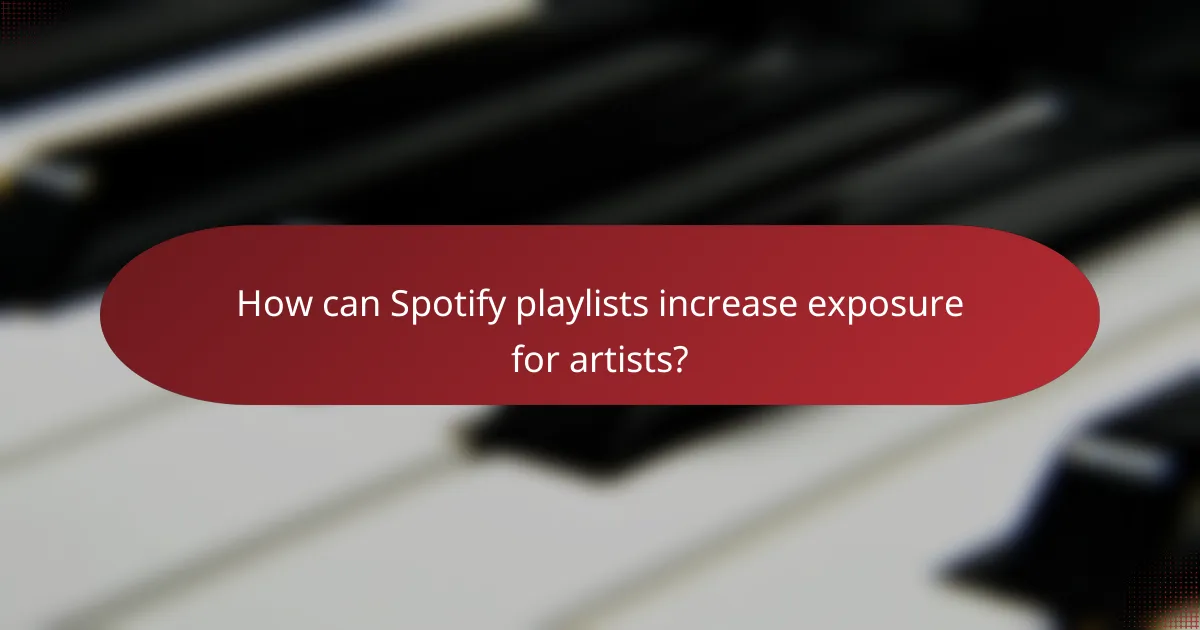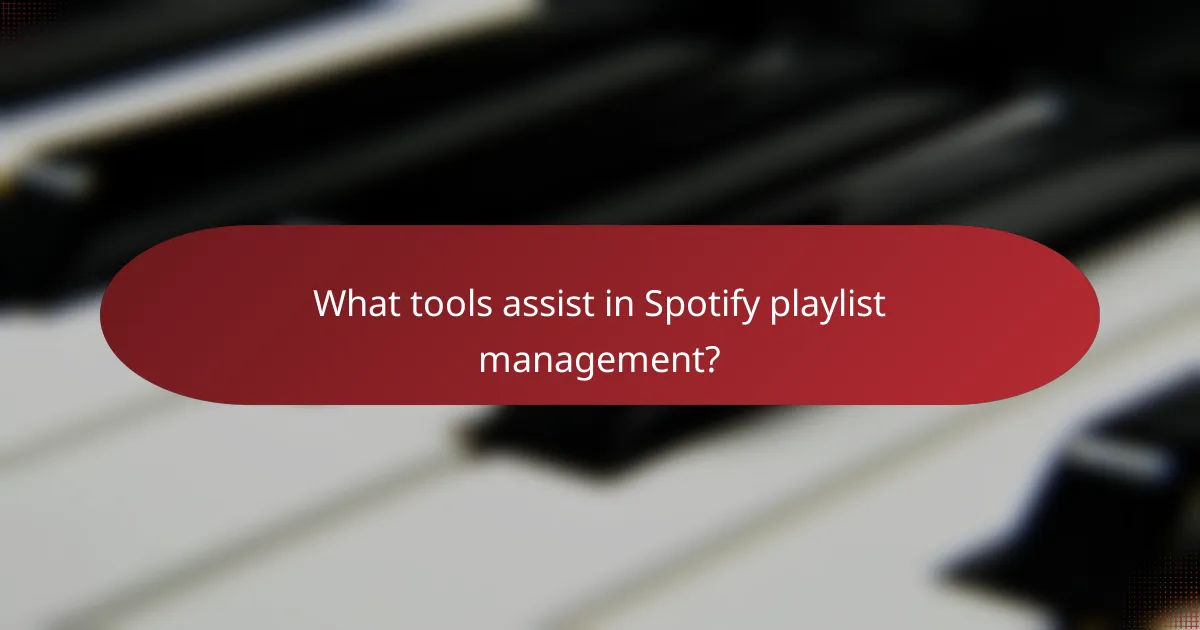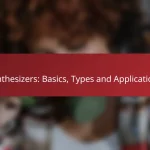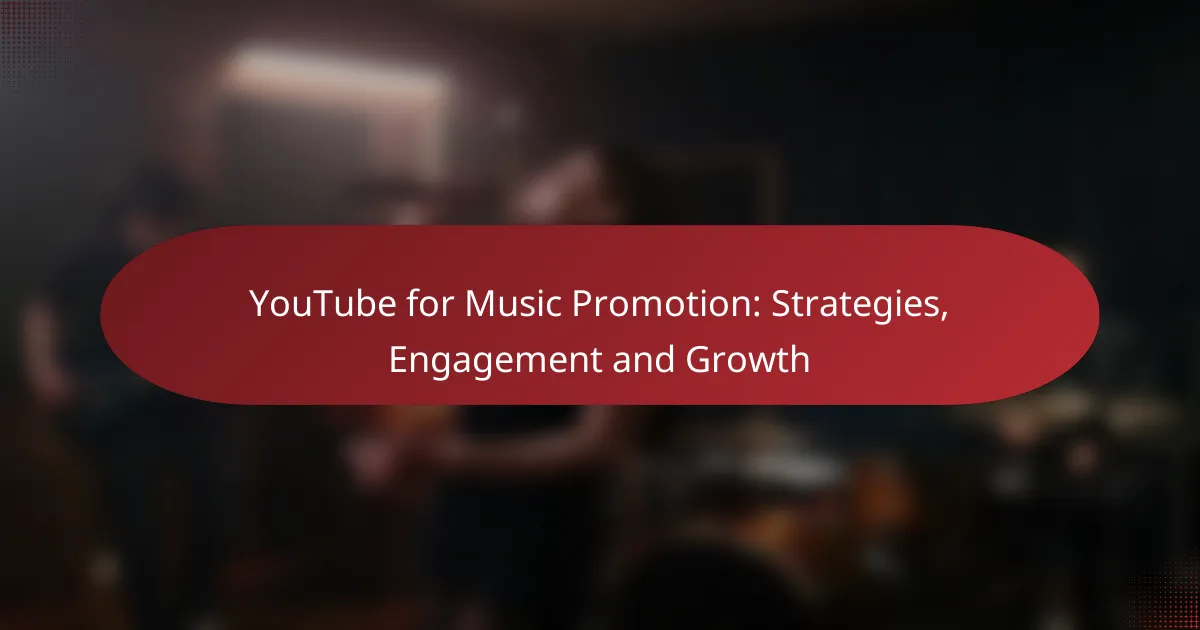Spotify playlists serve as a powerful tool for artists seeking to enhance their exposure and connect with a broader audience. By strategically targeting specific listener groups and leveraging playlist performance metrics, musicians can effectively increase their streams and visibility in a competitive landscape. Understanding how to navigate Spotify’s algorithm and create engaging thematic playlists is essential for successful audience building.

How can Spotify playlists increase exposure for artists?
Spotify playlists can significantly enhance an artist’s exposure by placing their music in front of a larger audience. Being featured on popular playlists can lead to increased streams, followers, and overall visibility in the competitive music landscape.
Playlist placements on Spotify
Playlist placements on Spotify are crucial for artists looking to expand their reach. When a track is added to a popular playlist, it can attract thousands of new listeners, often resulting in a spike in streams and followers. Artists should aim for both algorithmic playlists, which are generated based on user behavior, and editorial playlists curated by Spotify’s team.
To improve chances of placement, artists should focus on creating high-quality music and engaging with their existing audience. Consistency in releasing new tracks can also help maintain momentum and keep listeners interested.
Collaborating with playlist curators
Collaborating with playlist curators can provide artists with additional opportunities for exposure. Curators often have established audiences and can help promote an artist’s music to listeners who may not discover them otherwise. Building relationships with curators through networking and social media can lead to more playlist placements.
When reaching out to curators, artists should personalize their messages and highlight what makes their music unique. Providing a brief, compelling pitch along with links to their best tracks can increase the likelihood of being featured.
Utilizing social media for promotion
Social media is a powerful tool for promoting Spotify playlists and increasing an artist’s exposure. By sharing links to their playlists and engaging with fans, artists can drive traffic to their music. Platforms like Instagram, Twitter, and TikTok can be particularly effective for reaching a wider audience.
Artists should consider creating engaging content, such as behind-the-scenes videos or live performances, to attract attention. Regularly posting updates about new releases and playlist features can keep followers engaged and encourage them to share the music with their networks.
Engaging with listeners through feedback
Engaging with listeners through feedback can help artists build a loyal fan base and increase their exposure. By encouraging fans to share their thoughts on tracks and playlists, artists can foster a sense of community. This interaction can lead to valuable insights about what resonates with their audience.
Artists should actively respond to comments and messages on social media and consider conducting polls or Q&A sessions to gather feedback. This two-way communication can enhance listener loyalty and promote word-of-mouth sharing of their music.

What strategies enhance audience building on Spotify?
To effectively build an audience on Spotify, artists should focus on targeted strategies that engage specific listener groups. This involves understanding niche markets, creating compelling thematic playlists, and leveraging Spotify’s algorithm to increase visibility.
Targeting niche genres
Focusing on niche genres allows artists to connect with dedicated listener bases who are often more engaged. By identifying specific styles or subgenres, musicians can tailor their content to meet the preferences of these audiences.
For instance, an artist specializing in lo-fi hip-hop can create playlists that resonate with fans of that genre, increasing the likelihood of attracting followers who appreciate their unique sound. This targeted approach can lead to higher engagement rates and a loyal fan base.
Creating thematic playlists
Thematic playlists can enhance audience engagement by curating songs around specific moods, activities, or concepts. Artists should consider creating playlists that reflect their musical style or the themes present in their work.
For example, a playlist titled “Chill Vibes for Study Sessions” can attract listeners looking for background music while studying. Consistently updating these playlists with new tracks can keep the audience engaged and encourage them to return for fresh content.
Leveraging Spotify’s algorithm
Understanding and utilizing Spotify’s algorithm is crucial for increasing visibility and reaching new listeners. The algorithm favors playlists that receive regular updates and high listener engagement, so artists should focus on promoting their playlists and encouraging shares.
Additionally, collaborating with other artists or influencers can help expose music to broader audiences. Engaging with fans through social media and encouraging them to save and share playlists can further enhance algorithmic favorability, leading to increased streams and followers.

How to analyze playlist performance metrics?
Analyzing playlist performance metrics involves examining various data points to understand how well your music is performing on Spotify. Key metrics include listener engagement, reach, and growth, which can inform your strategy for audience building and exposure.
Using Spotify for Artists analytics
Spotify for Artists provides essential analytics that help you track your playlist performance. You can view metrics such as total streams, listener demographics, and song saves, which offer insights into who is engaging with your music.
To effectively use these analytics, regularly check your dashboard to identify trends over time. Look for spikes in streams or saves after promotional efforts, as this can indicate what strategies are working.
Tracking listener engagement rates
Listener engagement rates reflect how actively users are interacting with your playlist. Key indicators include the percentage of listeners who save your songs, share them, or add them to their own playlists.
To track engagement, monitor these metrics over time and compare them against your promotional activities. A consistent engagement rate can suggest a loyal audience, while fluctuations may indicate the need for adjustments in your marketing approach.
Evaluating playlist reach and growth
Evaluating playlist reach involves measuring how many unique listeners are accessing your music over a specific period. Growth can be assessed by tracking the increase in followers or streams.
Utilize tools like Spotify for Artists to compare your reach month over month. Aim for a steady increase in both unique listeners and total streams, which can signal successful audience-building efforts. If growth stagnates, consider refreshing your playlist or collaborating with other artists to expand your reach.

What are the best practices for playlist curation?
Effective playlist curation involves a strategic approach to selecting and organizing tracks that resonate with your target audience. Key practices include maintaining regular updates, balancing popular and emerging tracks, and creating a cohesive listening experience.
Maintaining consistent updates
Regularly updating your playlists keeps them fresh and engaging for listeners. Aim to refresh your playlists at least once a month, adding new tracks and removing those that no longer fit the vibe.
Consider setting a schedule for updates, such as weekly or bi-weekly, to ensure you consistently engage your audience. This can help retain listeners and attract new ones who are looking for current music trends.
Balancing popular and emerging tracks
A successful playlist should feature a mix of well-known hits and lesser-known tracks to appeal to a broader audience. Including popular songs can attract listeners, while emerging artists can introduce your audience to new sounds and foster a sense of discovery.
As a guideline, consider a ratio of around 70% popular tracks to 30% emerging ones. This balance can help maintain listener interest while supporting new talent in the music industry.
Creating a cohesive listening experience
To enhance the listening experience, ensure that the tracks in your playlist flow well together. This can be achieved by considering factors such as tempo, genre, and mood when selecting songs.
Use transitions between songs to maintain energy and engagement. For example, if your playlist starts with upbeat tracks, gradually shift to slower songs to create a dynamic journey for your listeners. This thoughtful arrangement can make your playlist more enjoyable and memorable.

How do collaborations impact playlist success?
Collaborations can significantly enhance playlist success by combining the fan bases of multiple artists, leading to increased visibility and engagement. When artists work together, they tap into each other’s audiences, creating a broader reach and more opportunities for listeners to discover new music.
Cross-promotion between artists
Cross-promotion occurs when collaborating artists actively promote each other’s work through their social media channels, newsletters, or live performances. This strategy can lead to a substantial increase in streams and followers for both parties. For example, an artist featuring on another’s track can share the song on their platforms, introducing their audience to the collaborator’s music.
To maximize cross-promotion, artists should coordinate their marketing efforts, ensuring that both parties are equally represented in promotional materials. This mutual support fosters a sense of community and can lead to long-term partnerships.
Shared audience engagement
Collaborations allow artists to engage with a shared audience, which can lead to more interactive experiences such as joint live streams or Q&A sessions. By leveraging the strengths of each artist, they can create unique content that resonates with fans from both sides. This engagement can increase listener loyalty and encourage fans to explore more music from both artists.
Artists should consider hosting collaborative events or contests that encourage audience participation, such as remix competitions or fan voting on future collaborations. These activities can deepen connections with fans and enhance visibility in playlists.
Building relationships with influencers
Collaborating with other artists often leads to connections with influencers in the music industry, such as producers, DJs, or music bloggers. These relationships can provide valuable exposure and credibility, as influencers may feature the collaboration in their playlists or social media channels. Building these connections can amplify the reach of the music and attract new listeners.
To effectively build relationships with influencers, artists should engage with them authentically by sharing their music, attending industry events, or collaborating on projects. This proactive approach can open doors to new opportunities and broaden the artist’s network within the industry.

What tools assist in Spotify playlist management?
Several tools can enhance Spotify playlist management by streamlining submission processes, tracking performance, and analyzing audience engagement. Utilizing these tools can help artists and curators effectively reach their target listeners and optimize their playlists.
Soundplate for playlist submission
Soundplate is a popular platform that simplifies the process of submitting tracks to various Spotify playlists. Users can browse through a wide range of playlists and submit their music directly, increasing the chances of getting featured.
When using Soundplate, it’s essential to ensure that your track meets the playlist’s criteria, such as genre and quality. This can significantly improve your submission’s success rate. Additionally, engaging with playlist curators through Soundplate can foster relationships that may lead to future opportunities.
To maximize your chances, consider submitting to multiple playlists simultaneously while keeping track of which playlists have accepted your music. This organized approach can help you build a more extensive network and increase your exposure on Spotify.










